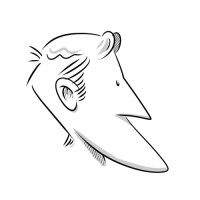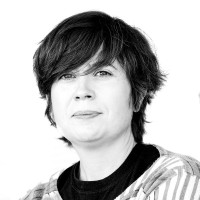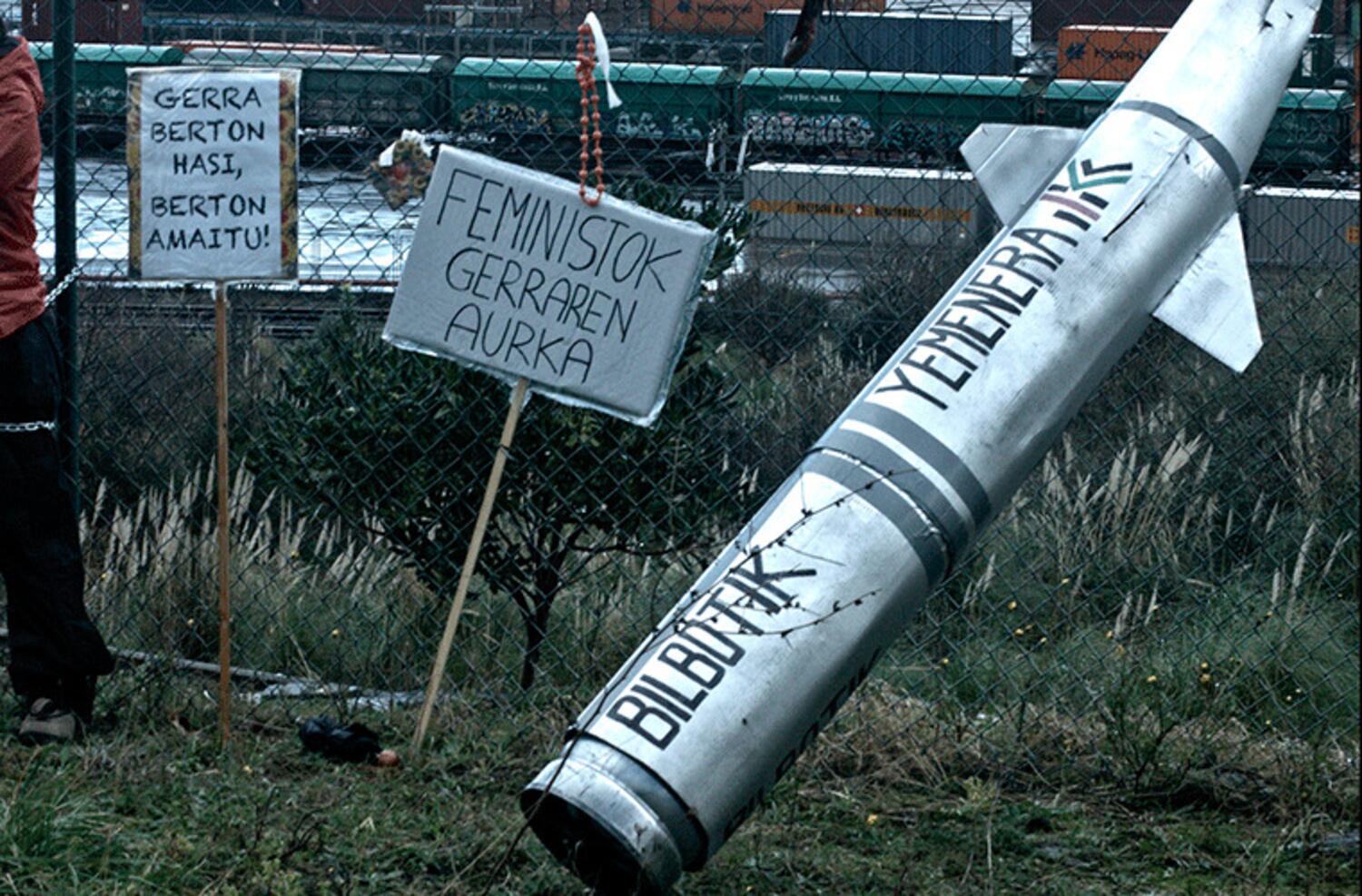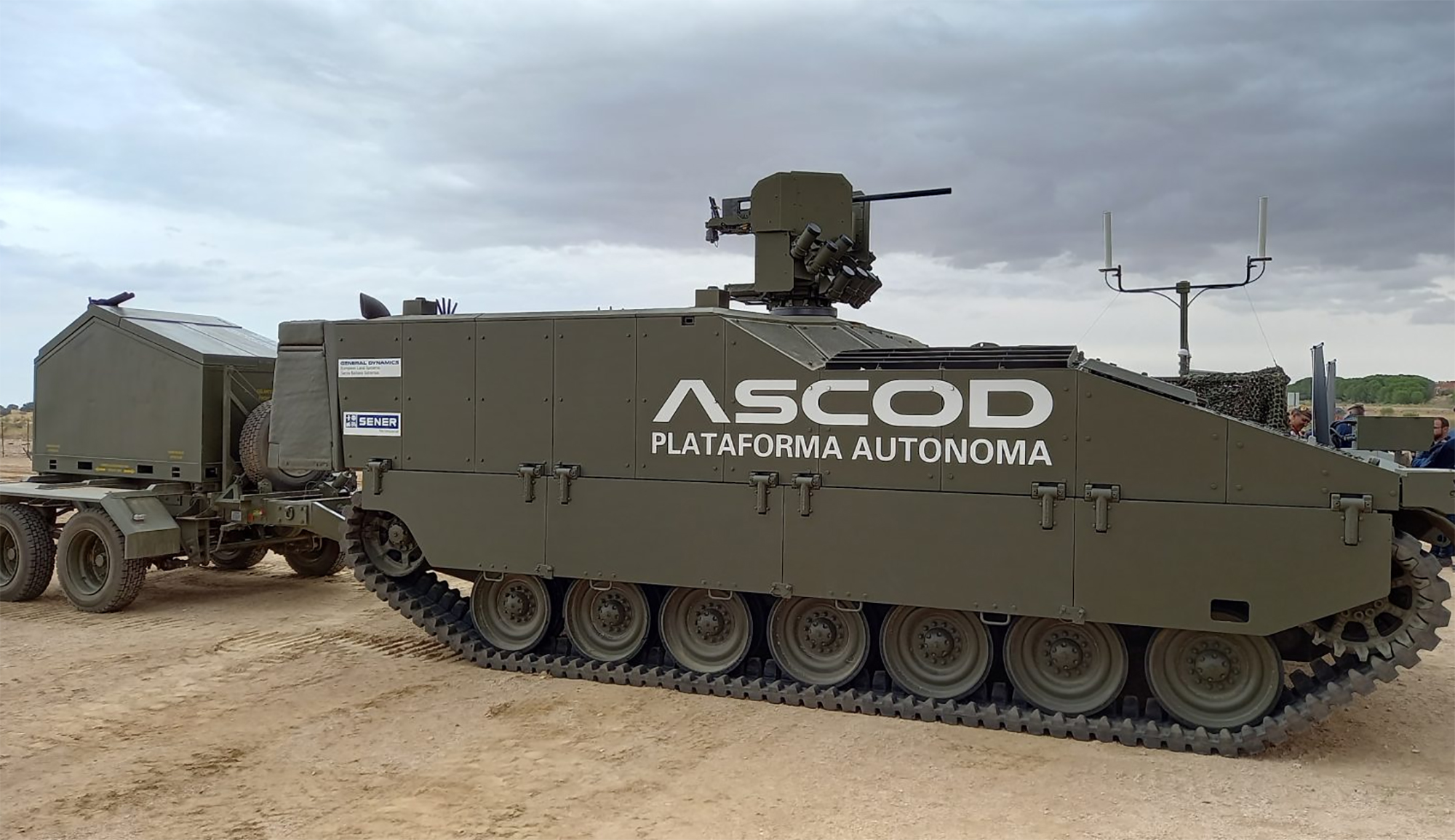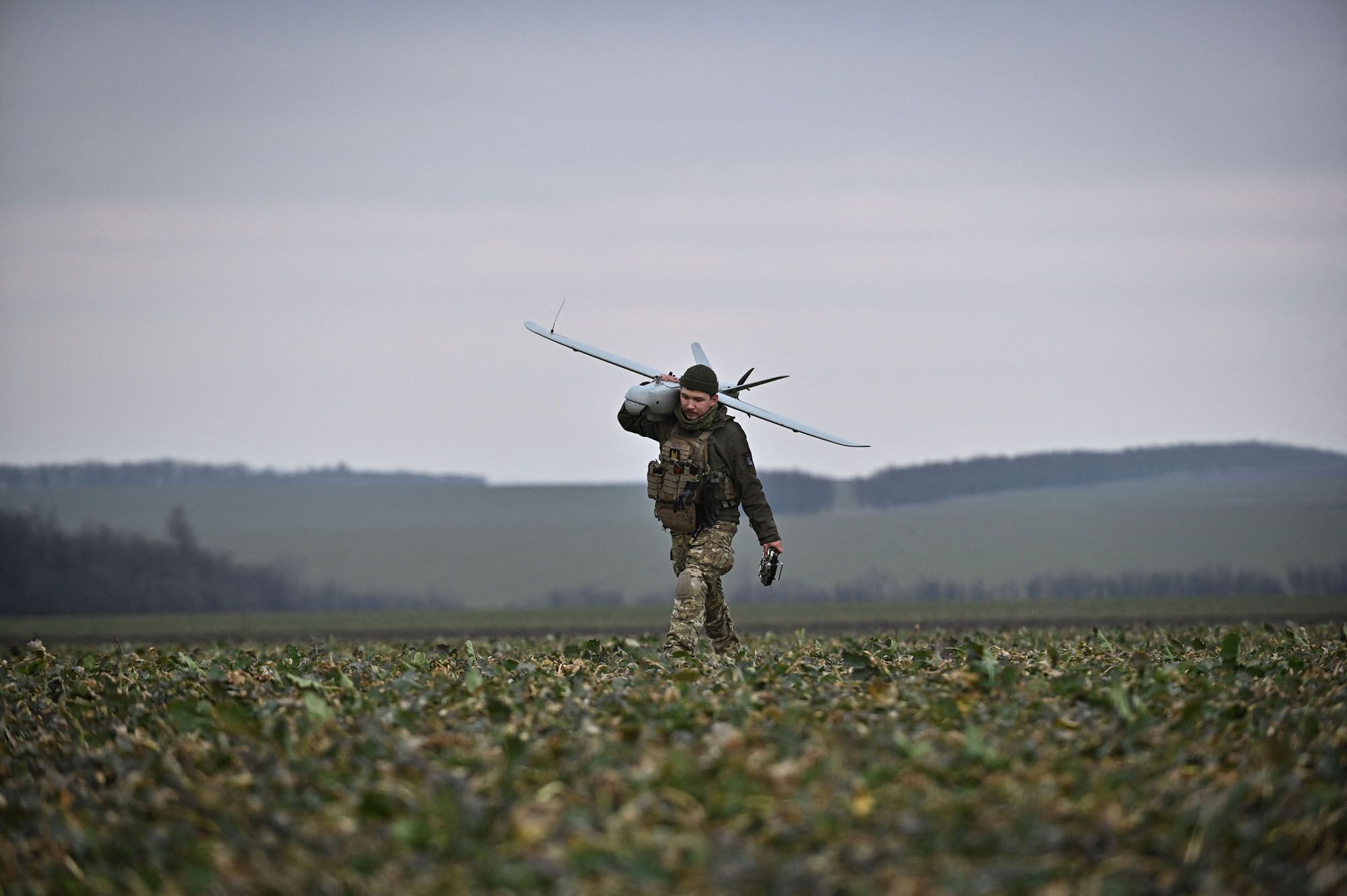Nazi Business in Spain
- In the 1950s, it was common to see Germans in Markina-Xemein and towns around. Among them was Otto Skorzeny, a well-known SS commander and engineer, who has performed special operations for Hitler. In his films and research on his life, his relationship with the Basque Country has gone unnoticed. What was he doing here? The Nazi fugitives used their experience to continue doing business through the Esperanza and Cia arms factory and other companies.
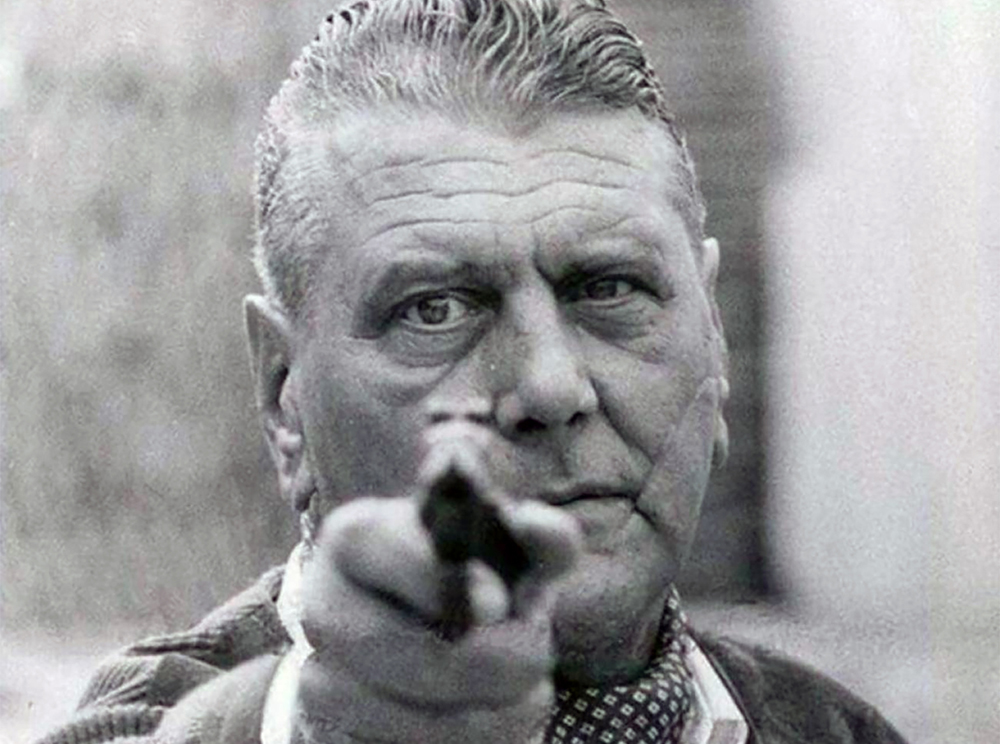
How many hours we spent in class at our Markina-Xemein school, looking at the roof or walls, thinking about what plan to do in the afternoon with friends. Unfortunately, despite all our imagination, we never came to imagine what had happened in the lands of that school. There was a story that surprised us: the ghost of German who once lived there. When we were in class, when a stream of air or a blow caused the curtain to move or a door to close, a master who was fond of history told us:
- German!
We laughed. Who was that man? German? Many generations we met this character. The professor told us that some Germans lived in those lands and that after they died or went elsewhere, the government bought the site, tore down the houses and built the public school Bekobenta HH-LH-BHI that we know today. It was very rare. After a few years, in order to investigate what was really behind that German story, the teacher and I started collecting testimonies and collecting documentation from the largest neighbors of the surrounding villages.
Questioning him, he immediately pronounced a name that would take this story further: Otto Skorzeny, commander and chief engineer of the main militia of the German Nazi party SS
Wilhelm Mallet and Ruth Adams were the German couple who lived in the house. They were installed around 1950 in Markina-Xemein, one of those couples who came “on holiday” from Madrid. They had an impressive house: twelve workers, cooks, service, guide, gardener... The house was called “Finca de El Retiro”. It was obvious that they had money. And as our research progressed, we reaffirmed what we perceived by the time and context: This is a group of Nazis who fled Germany after the Second World War.
Salvador de Mussolini
The enclosure of the current school was surrounded by a high stone palisade, in whose interior there was a large chalet and, next to it, the house of the servants. The rest of the land was covered with elegant trees and flowers and had a very elegant fountain, which is still in the garden of Lea Artibai Ikastetxea. In the lower part of the house there was a winery full of wine and liquor and a large safe. According to the descriptions provided by the population, this winery can be prepared to be used as a strong plaza. Their walls were thick and inclined, as if they were bunkers.
Questioning him, he immediately pronounced a name that would take this story further: Otto Skorzeny. Skorzeny was a commander and engineer of the Great Militia of the Nazi Party in Germany (SS) and undertook several special operations under the direct command of Adolf Hitler. The best known was the release of Benito Mussolini in 1943, when he was kidnapped by the allies at the Hotel Campo Emperatore, on Mount Gran Sasso, in the Apenines. After that, he did many other operations, becoming Hitler's trusted man.
At the end of the war, Skorzeny took refuge in Spain, sheltered by Franco, like many other Nazis. After being tried for war crimes in Nurenberg, he managed to be released from prison, but was sentenced to a process of de-nazification. Then, taking advantage of his contacts, he escaped. He resided in Madrid and Mallorca, but also left a trail in the Basque Country.
.jpg)
Strange movements in the summer chalet
Skorzeny was related to the house of the Germans of Markina-Xemein and those who lived in it, since he was a friend of Wilhelm Mallet, who in the village knew him as William, and became a partner towards 1952. Both names appeared on the Office of Strategic Services (OSS) lists, the U.S. intelligence service of the time, considered the antecedent of the CIA. According to the investigations carried out by the Americans and the Israelis, in the Spanish State they were Nazis of refugees, according to old files declassified by the Cia.
The German military escaped did not want to have close relations with the people, lived underground, and in a small town like Markina-Xemein they did not attract much attention, taking advantage of the tranquility of the neighborhood. In this house separated and separated from the village, it was easy to join with the old “comrades”.
It is known that Otto Skorzeny, together with other former members of the refugee SS in the Spanish State and South America, created a large ODESSA network to launch Nazism. This organization, also known as the spider, should have been tried for crimes against humanity in the third century. He helped many Reich leaders search for travel and safe shelters. According to the older people of the town, it was common to see Mercedes black cars enter the house of Mallet.Se celebrated there many festivals, one knows why and with whom...

In the bar of the hotel Vega de Markina-Xemein, the German engineer, dressed in a white suit, took the Martini from noon. He had his house in Madrid, but in our house he spent many months. In summer, he also rented a house located at the top of the Lekeitio beach. This building, currently demolished, was between the Church and the Deskarga Bridge. He was seen on the beach or in the bars of the area, and a man who drew attention for his appearance and size: The man, 1.92 meters high, presented a long spot on the cheek from the eye to the mouth.
Wilhelm Mallet, businessman and…
The trajectory of Wilhelm Mallet began in the Basque Country a few years earlier, as he acted as a spy in Iparralde, as well as in the surroundings of Irun and Behobia, since 1934, transferring information about French and Spanish Republicans to the German Government. Mallet was also a businessman. According to others, in the War of 1936 he was a pilot of the Condor Legion and explained to a Markina citizen that this is why he knew our territory so well. On the contrary, Luftwaffe is not on the pilot lists of this air force unit. His wife, Ruth Adams, died a few years after buying the house of Markin-Xemein, burned with an electric blanket. Very rare too.
Beyond the quiet and the semi-solid, there is another reason that led these Nazis to Markina-Xemein. Otto Skorzeny worked as an engineer in World War II creating new and modern weapons to hinder allied advancement. He participated in the manufacture of numerous aircraft and missiles, as he himself explained in his autobiography. Among other projects, the most prominent were manned aircraft missiles: Along with British pilot Hanna Reitsch, the suicide pilots were prepared to attack the cities and boats of the allies, according to the same sources.
When the Nazi fugitive arrived in Madrid after the war, Castor Uriarte, director of the Esperanza and Cia arms factory at Markina-Xemein, unfortunately well known, hired him to design new weapons.
Between bombings and bombs
Castor Uriarte was an architect and was the same rationalist of the Esperanza and Cía style buildings in Markina-Xemein in 1933, married to Josefa Esperanza, daughter of the owner of the company. However, we are better known for his role in 1937 in the fight against the destruction of Gernika: he built the shelters of the villa and left a testimony about the bombardment written in a book.
.jpg)
Years later, Uriarte, with the command of his father-in-law's arms company, seems to have seen a business opportunity taking advantage of the experience of the Nazi German engineer. For the mortars a new model of handcuff was sought for a long time, we do not know whether or not this new model was found, but Skorzeny went almost every day to test the prototypes on the beach of Samuel. It had a private office in the Markina-Xemein mortar workshop.
.jpg)
Skorzeny was a man of war or, rather, an arms dealer. He had business with many governments in Africa, the Middle East and South America, and yes, among other materials, he exported mortars and grenades from Markina-Xemein to Egypt, Morocco ... He was a friend of Juan Domingo and Eva Perón, as well as of other dictators, so it is very possible that the famous ECIA mortars that were made in Euskal Herria moved to the other side of the sea. His contacts opened many doors to him. He worked with Wilhelm Mallet as the representative of Esperanza and Cía, Oerlikon and other companies to do arms sales business with companies and authorities in many countries.
Many documentaries and books have been made and published from the life of Skorzeny. Who would say that the convinced Nazi who was once known as “the most dangerous man in Europe” was not far from here, not even his old friends. But this is a story that's been erased in our popular memory, or maybe it's just a confusing, unknown fragment of the past, which has never been well explained. We now know that the ghosts of the school had a name and a surname.
At the beginning of the year, the Zedarria group publicly supported the "opening of the debate" on the "defense" industry (as well as the nuclear industry), to which the Basque Government has immediately joined. First, through Mikel Torres, Vice President and Economic Counselor, who... [+]
Ukrainaren ondoren Polonia?
Europar Batasunak Ukrainako gerra hauspotu du Kiev armaz hornituta, eta menia oraindik airean delarik, gerraren zikloan murgilduta dago bete-betean. Hori bai, bere diskurtsoa modulatzen ari da, eta gero eta gehiago hitz egiten du balizko su-etenaz... [+]
Bizitza erdigunean jartzeko abagunea ikusi genuen feministok zein ekologistok Covid-19 pandemia garaian. Ez ginen inozoak, bagenekien boteretsuak eta herritar asko gustura itzuliko zirela betiko normaltasunera. Bereziki, konfinamendu samurra pasa zutenak haien txaletetan edo... [+]
At the end of June we finished the first parts of the book Conversión de la industria militar en Euskal Herria para no fabricar más guerras (Adaptation of the arms industry in the Basque Country so as not to create more wars) La guerra is coming! It explores and investigates... [+]
Historia errepikatzen dela idatzi zuen Marxek, “lehenik tragedia gisa, gero fartsa moduan”. Armagintzaren eta militarismoaren inguruan errepikapen hutsa ez, espiralean goraka doan buklea ari gara bizitzen, fartsatik asko duena, eta tragedian amaitzeko gero eta aukera... [+]
“Ez dugu gerraren aurrean etsi nahi, ez dugulako hilerrietako bakea nahi”, dio manifestuak, eta agintariei irtenbide politiko baten alde lanean jartzeko eskatu diete. Sinatzaileen artean daude Delàs institutua, Gernika Gogoratuz edo Ongi Etorri Errefuxiatuak... [+]
Orain dela 20 bat urte, berrikuntzaren inguruan master bat egin nuen. Bertaraturiko gonbidatu batek esan zigun gizakion historian berrikuntza teknologikoaren eragile handiena gerra izan zela. Gerra, halaber, eragile handia da botere harremanen berrikuntzan.
Berrikuntzaz ari... [+]
Defentsarako gastua handitzeko Europako herrialdeen apustuaren atzean, asko dago propagandatik, eta askoz gehiago interes ekonomikotik. Kontrakoa sinetsarazi diguten arren, XVIII. mendean Ingalaterran Industria Iraultza jaio zenean, armak eta gerra izan zituen oinarri, eta ez... [+]
Hitlerren armadak milioika sobietarren heriotza ekarri zuen Bigarren Mundu Gerran Sobiet Batasuna inbaditu zuenean. Gerra amaituta, Iosif Stalinen obsesioa zen Alemania eta Errusia artean babes herrialde-lerro bat osatzea; horra, besteak beste, Varsoviako Itunaren sorrera... [+]
Trumpen garaipenak, Ukrainako gerraren birkokatze geopolitikoa eragiteaz gain, Europaren apustu belikoa agerian utzi du.
Mikel Jauregi Industria sailburuaren ustez, euskal enpresek “lan ona” egin dezakete Europaren “segurtasun estrategia babesten”. Eusko Jaurlaritzako bozeramaile Maria Ubarretxenak, berriz, berrarmatze asmoek “aukera berriak” ekar ditzaketela... [+]
Ukraina da munduan arma gehien erosten dituen herrialdea; munduko erosketa guztien %8,8. Merkatuaren ia erdia kontrolatzen duena, berriz, AEB dira: Europak erosi dituen armen erdia baino gehiagok jatorri estatubatuarra dute.
Europar Kontseiluak onartu du Ursula Von der Leyenek gastu militarrean proposatu duen 800.000 milioi euroko gastuarekin aurrera egitea. Horretarako bi arrazoi nagusi argudiatu ditu: Errusiari aurrea egitea eta Europar Batasunak aurrerantzean bere burua AEBen babes militarrik... [+]









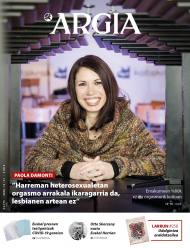

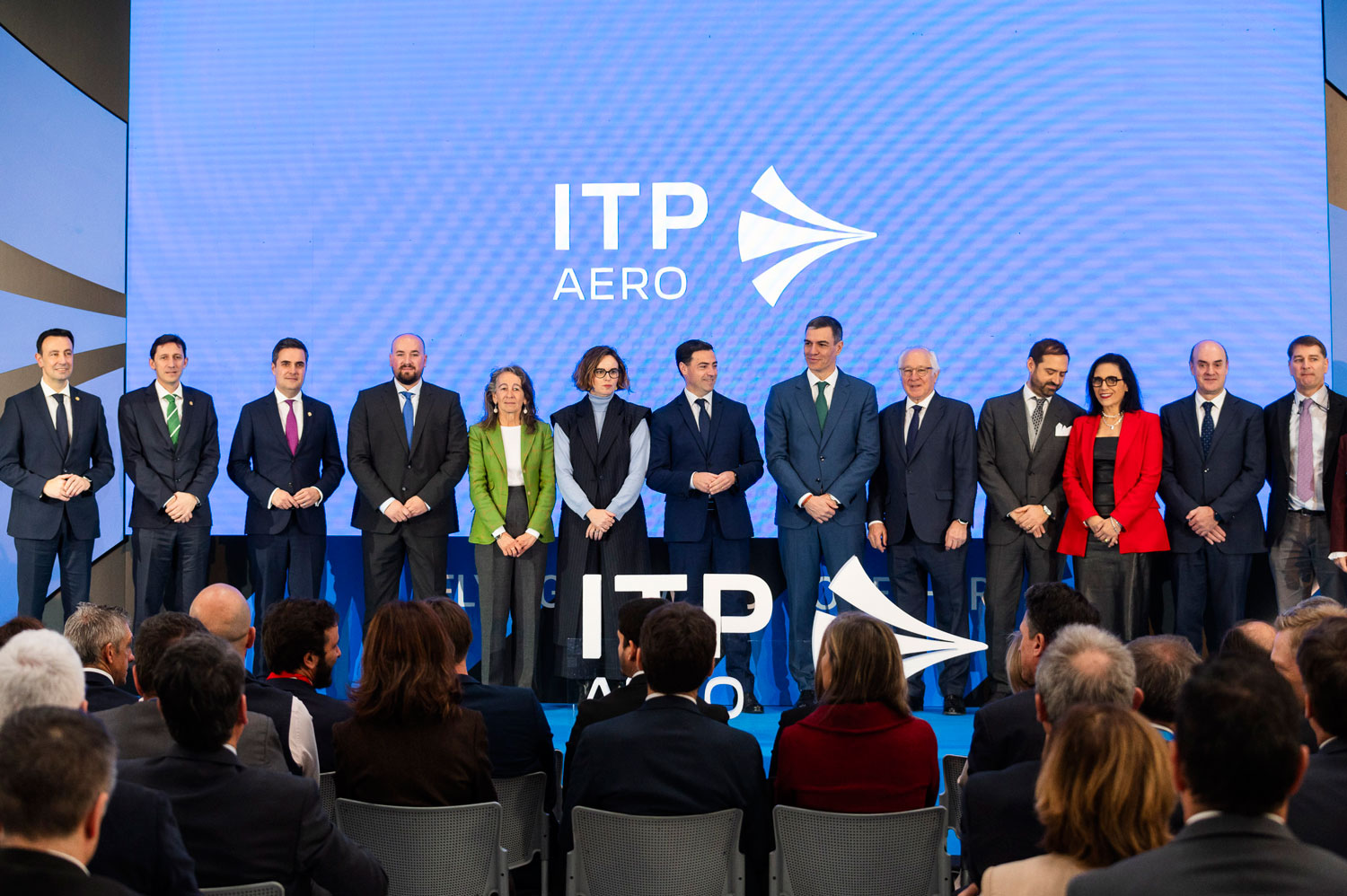
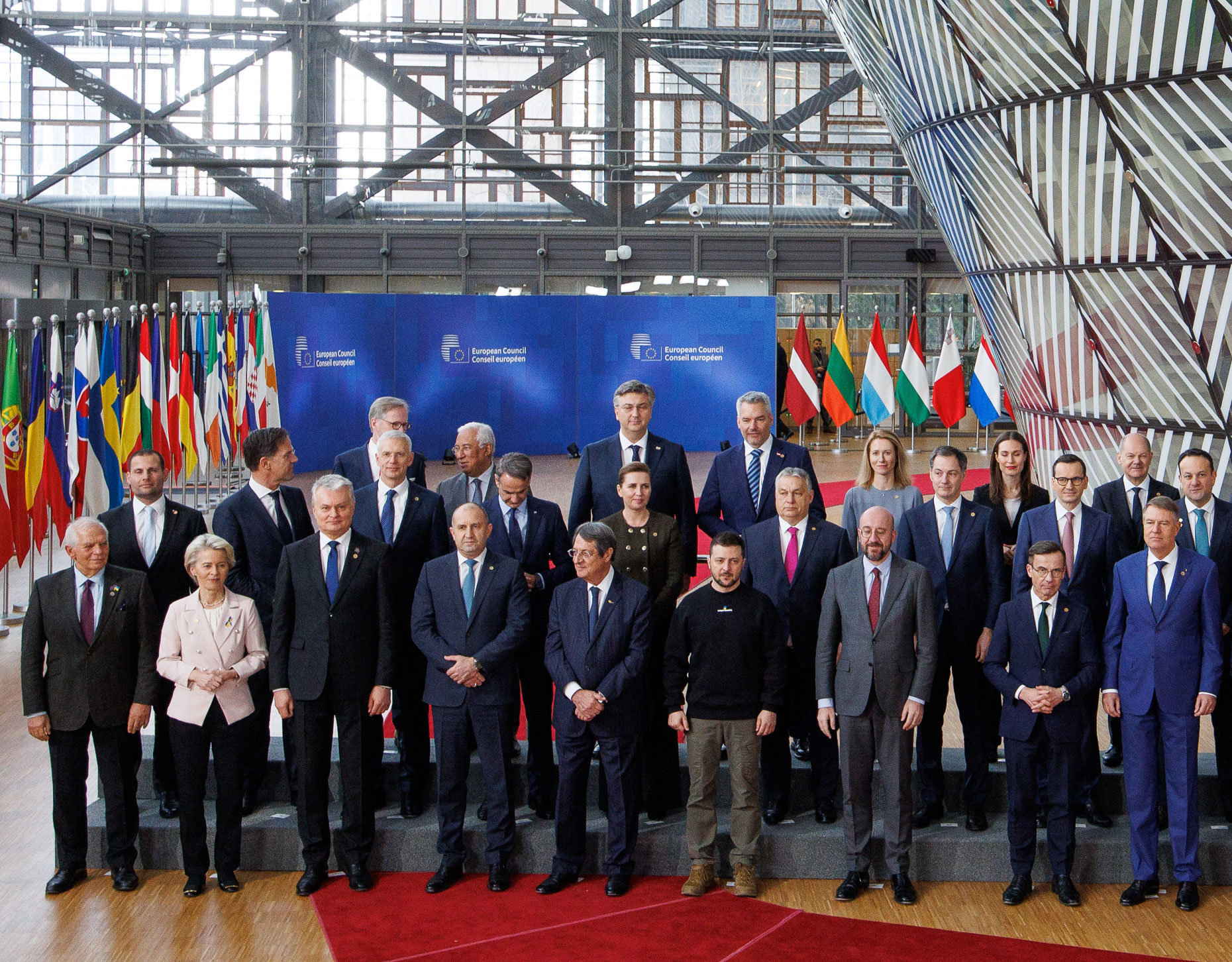
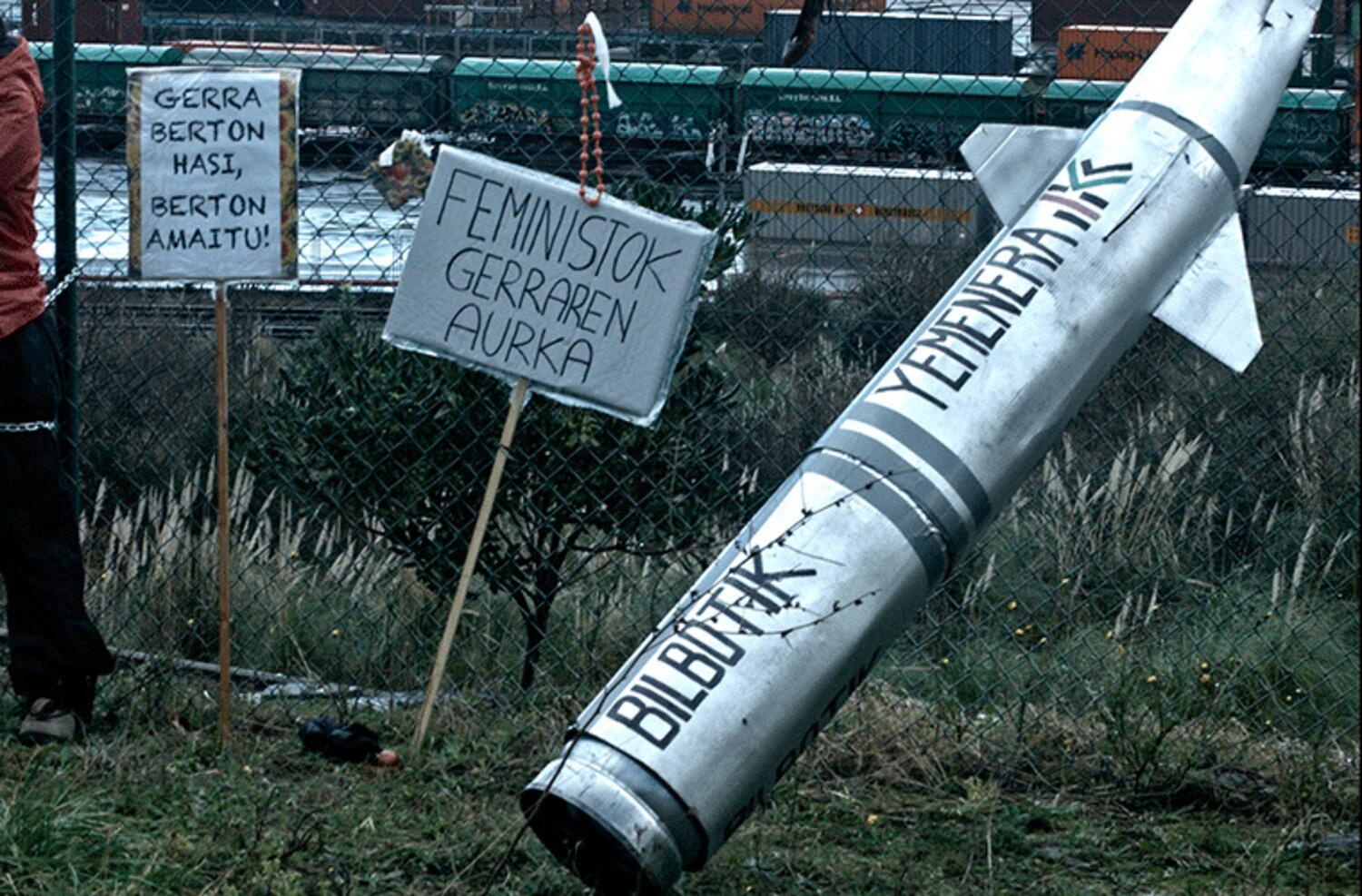

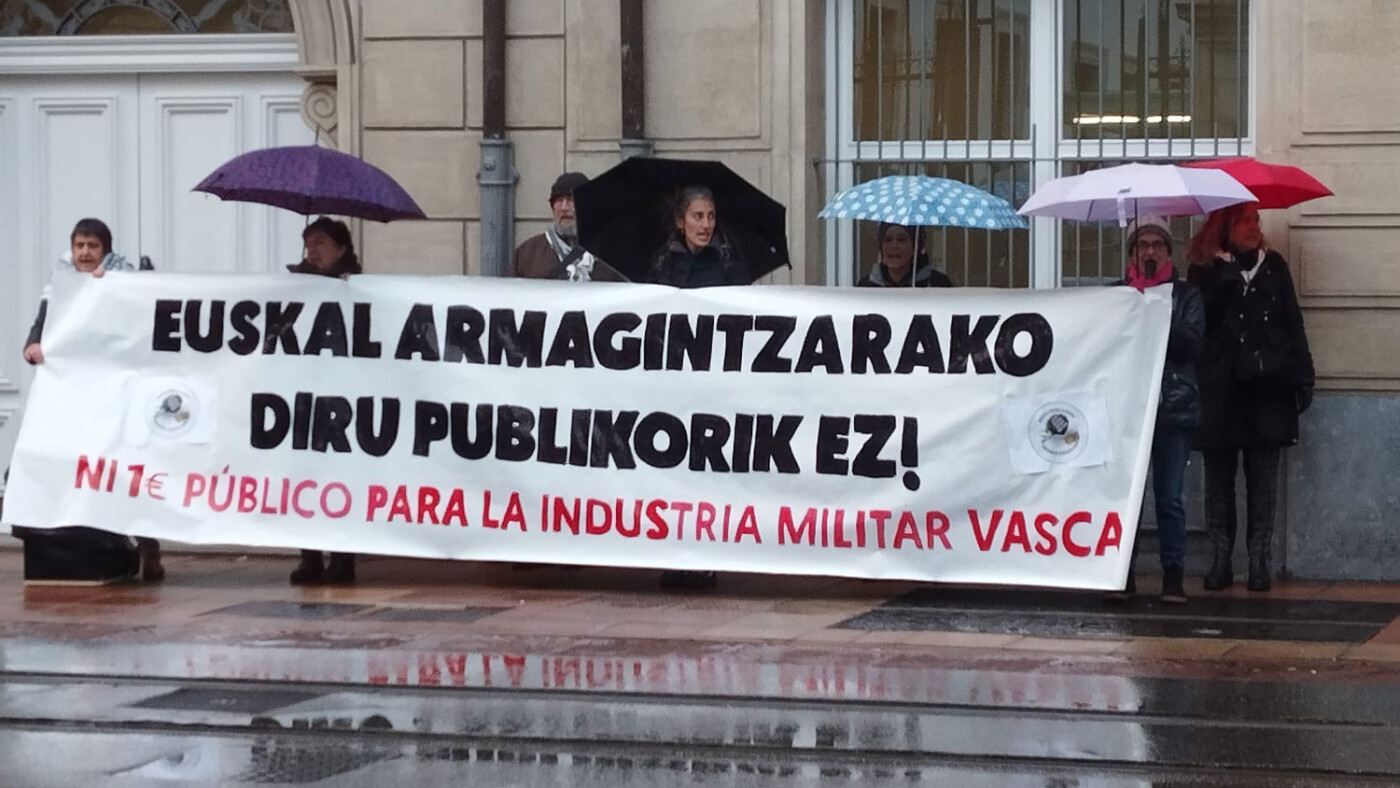
.jpg)
